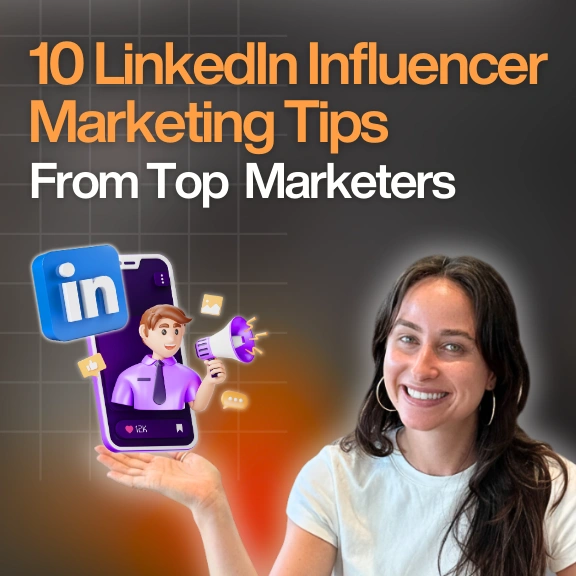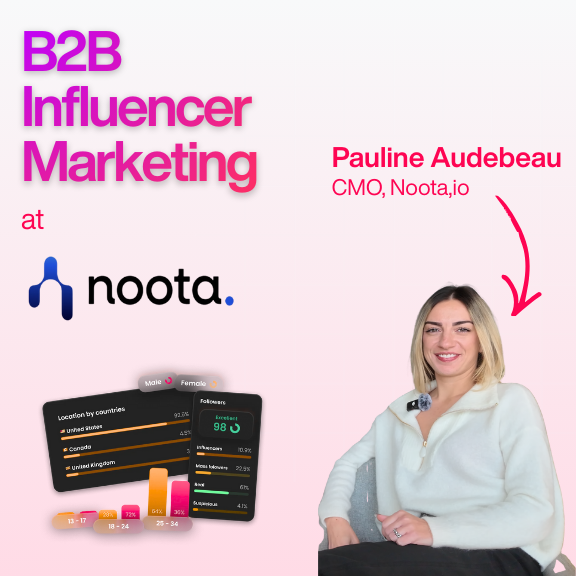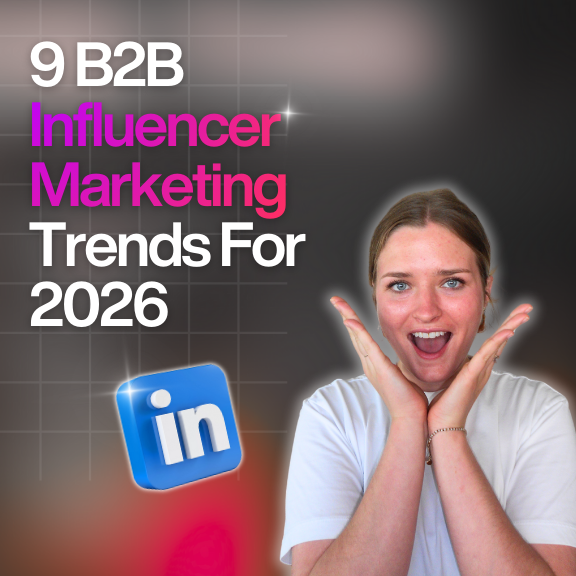Blog & Articles
Your ultimate ressource for the creator economy
Methodology & Rankings
About Favikon, rankings, tools & much more.
Insights
The recipe behind Favikon's viral & coveted rankings.
Free tools to power your influencer marketing workflows.
See Favikon users' success stories.
Get access to all Favikon rankings.
Become a Partner
Become an Affiliate
About the team behind Favikon
The place to talk creator economy, together


Featured Rankings

Here is the Top 50 Rising Video Creators on LinkedIn. Video is quickly becoming the platform’s most powerful format, with creators gaining more reach and engagement than ever. As Gen Z grows its presence and tools like BrandLink and Thought Leader Ads support content creation, LinkedIn is doubling down on video. This ranking, made in partnership with OpusClip, celebrates the creators leading this shift and aims to inspire anyone ready to start sharing through video.

Here is the Top 50 Rising Video Creators on LinkedIn. Video is quickly becoming the platform’s most powerful format, with creators gaining more reach and engagement than ever. As Gen Z grows its presence and tools like BrandLink and Thought Leader Ads support content creation, LinkedIn is doubling down on video. This ranking, made in partnership with OpusClip, celebrates the creators leading this shift and aims to inspire anyone ready to start sharing through video.
Influencer Marketing for E-Commerce
Struggling to drive consistent traffic and conversions for your e-commerce store? Traditional ads and promotions might not be cutting through the clutter of a saturated digital marketplace. That’s where influencer marketing comes in—a powerful tool to connect with your target audience, build trust, and turn followers into loyal customers. In this article, we’ll show you how influencer marketing can address your biggest challenges and help your e-commerce brand thrive.



Sarthak Ahuja is a marketing enthusiast currently contributing to digital marketing strategies at Favikon. An alumnus of ESCP Paris with over 2 years of professional experience, he has held multiple marketing roles across industries. Sarthak's work has been published in journals and websites. He loves to read and write about topics concerning sustainability, business, and marketing. You can find him on LinkedIn and Instagram.
Check Brand DealsLooking to scale your e-commerce business but not sure how to cut through the noise in a crowded digital marketplace? Influencer marketing can be your game-changer. By partnering with creators who have established credibility and engaged audiences, e-commerce brands can drive awareness, conversions, and customer loyalty.
This article explores how influencer marketing can transform your e-commerce strategy, common pitfalls to avoid, and actionable insights to maximize your ROI.
1. Why Influencer Marketing Works for E-commerce
✅ Trust and Authenticity Drive Purchases
In e-commerce, building trust is everything. Studies show that 61% of consumers trust recommendations from influencers, while only 38% trust branded content. Influencers act as relatable and trusted voices, showcasing your products in real-life scenarios that resonate with their followers.
Take the example of Gymshark, a fitness apparel brand that scaled rapidly through partnerships with fitness influencers.

✅ Content That Converts
Influencer collaborations often yield high-quality content that doubles as marketing material. This user-generated content (UGC) can be repurposed across your website, email campaigns, and ads to drive further engagement and sales.
2. Understanding Your Target Audience
✅ Customer Personas Are Key
Before selecting influencers, it’s essential to understand who your ideal customer is. Are you targeting young, eco-conscious buyers? Tech-savvy millennials? Or busy parents looking for convenience? Each of these personas aligns with different types of influencers.
For example, Daniel Wellington, a watch brand, partnered with lifestyle influencers whose aesthetics matched their minimalist design and targeted millennial audiences. This alignment helped the brand achieve a $200M revenue milestone in just a few years.

✅ Demographic and Psychographic Fit
The right influencer isn’t just about numbers—it’s about audience relevance. Use data to ensure that the influencer’s followers match your target market in terms of age, location, and interests. For instance, if your e-commerce store sells skincare products, look for influencers with followers who are highly engaged in beauty and self-care content.
3. Strategic Steps for E-commerce Success
✅ Set Clear Objectives
Every successful influencer campaign starts with a clear goal. Are you looking to boost brand awareness, drive website traffic, or increase sales of a specific product? Defining this upfront ensures that your influencer partnerships are purposeful.
For instance, Amazon frequently collaborates with influencers to promote specific product categories during Prime Day, using swipe-up links to measure direct conversions.
✅ Incentivize Through Affiliate Programs
Offering influencers affiliate commissions is a win-win strategy. It not only motivates influencers to promote your products more passionately but also directly ties their efforts to measurable sales.

✅ Leverage Micro-Influencers
While mega-influencers can provide wide reach, micro-influencers often deliver higher engagement rates.

4. Platforms and Formats That Work
✅ Instagram and TikTok Dominate
Instagram remains a powerhouse for influencer marketing, with features like Stories, Reels, and shoppable posts making it ideal for e-commerce. TikTok, however, has emerged as a game-changer, especially for younger demographics. Viral TikTok trends have turned small e-commerce brands into overnight sensations.

✅ Diversify Across Channels
Don’t limit your campaigns to one platform. For example, while Instagram and TikTok are great for product discovery, YouTube allows influencers to create in-depth reviews and tutorials that build trust and drive purchase decisions.
5. Common Pitfalls to Avoid
❌ Overlooking Engagement Metrics
An influencer with millions of followers may seem like the perfect choice, but low engagement rates could indicate an inactive or disinterested audience. Prioritize influencers whose followers actively engage with their content.
❌ One-Off Campaigns
Sporadic partnerships rarely yield long-term results. Building ongoing relationships with influencers ensures consistency in messaging and fosters trust with their audience over time.
❌ Neglecting Post-Campaign Analysis
Many e-commerce brands fail to measure the impact of their campaigns. Use tools to track metrics such as referral traffic, conversion rates, and average order value (AOV) to understand what worked and refine your approach.
6. Maximizing ROI with Creative Campaigns
✅ Bundle Discounts with Exclusive Offers
Encourage influencers to promote exclusive discount codes for their followers. This not only drives immediate sales but also creates a sense of exclusivity that boosts brand loyalty.
✅ Engage in Real-Time Content
Real-time campaigns, such as Instagram Live sessions or flash sales announced by influencers, create urgency and drive impulse purchases.
✅ Focus on Storytelling
Rather than pushing product features, collaborate with influencers to share compelling stories about how your product fits into their lives. Emotional connections often lead to higher conversions.
How Can Favikon Help Transform Your E-commerce Strategy?
Favikon provides an all-in-one solution to help e-commerce brands master influencer marketing. Here’s how Favikon elevates your campaigns:
✅ Discover the Perfect Influencers
With Favikon’s extensive database, finding influencers who align with your brand’s values and audience is effortless. Whether you’re seeking fashion bloggers, tech reviewers, or fitness enthusiasts, Favikon helps you pinpoint the right creators for your niche.

✅ Audience Insights for Precision Targeting
Favikon allows you to analyze an influencer’s audience demographics, interests, and location. This ensures that your campaign reaches the most relevant shoppers, maximizing your ROI.

✅ Track Campaign Performance in Real-Time
Monitor metrics such as engagement, conversions, and sales to measure the success of your campaigns. Favikon’s analytics dashboard ensures you can optimize your strategy for future growth.

Conclusion
For e-commerce brands looking to scale, Favikon offers the tools and insights you need to stay ahead in the competitive world of influencer marketing. Explore how Favikon can elevate your e-commerce strategy at Favikon. Transform your e-commerce campaigns into success stories!
Related Articles
See all the articlesResources











.png)









